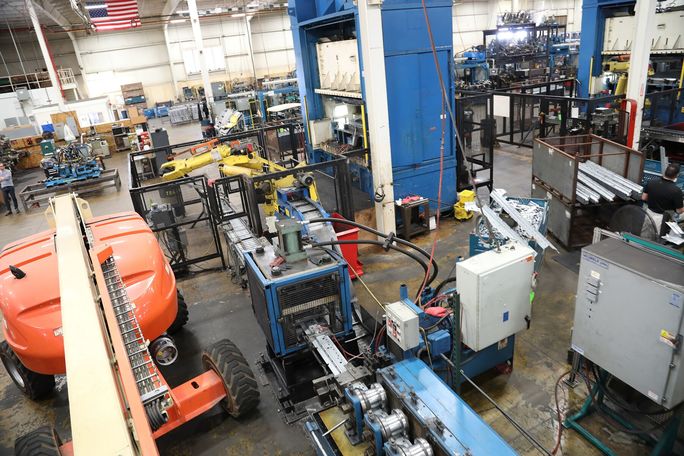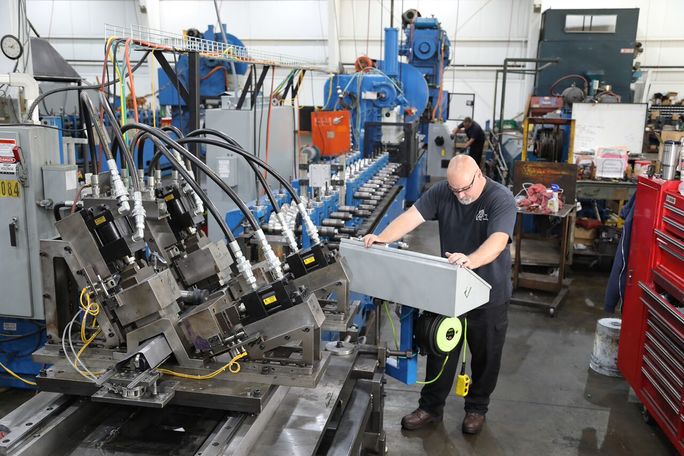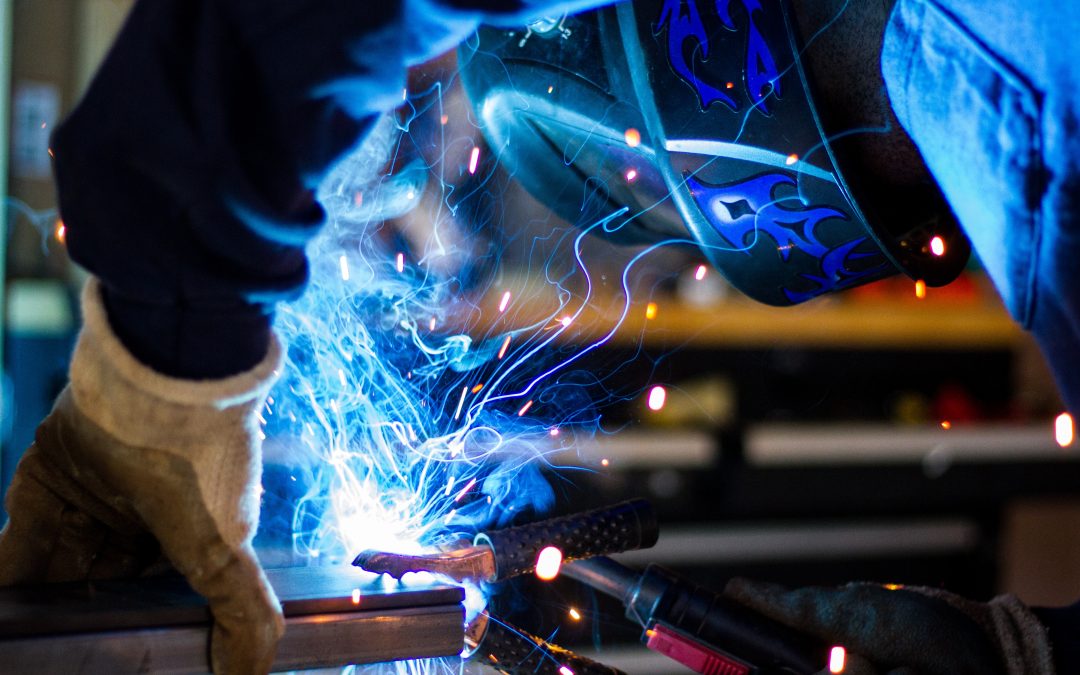
by admin | Dec 20, 2017 | LTC Roll Blog
Today, the manufacturing industry continues to impact the daily lives of countless people. The ability to manufacture individual parts has had some amazing effects on our world. Unfortunately, many people are unaware of the benefits that manufacturing provides for businesses and everyday consumers across the world. Even today, the American economy is heavily impacted by the manufacturing industry. Manufacturing Produces Jobs The most important benefit of the manufacturing industry is how many jobs it creates for Americans. Tags and stamps that read, “Made in the U.S.A,” are an indication that someone in America helped produce that product. It represents a job created, providing an income for a person or even a family. There are approximately 12.5 million workers in this field which equates to 8.5% of the workforce. Other benefits stem from the job creation in manufacturing. For example, it also cuts down on costs. All the elements of production are in the same place with the same workers. Likewise, manufacturing in the U.S. increases the public perception of your company and brand overall. Most people appreciate that you want to create jobs in America. As a result, they choose to buy your products over products from a company that outsources their production. It’s the Largest Multiplier When it comes to supporting other sectors of the economy, the manufacturing industry provides the greatest support. As a result, it is considered the largest multiplier out of every part of the economy. For every dollar spent in manufacturing, other sectors earn even more on the back end. On average, it equals about 50 cents on the dollar. By creating profits for other sectors of the...

by admin | Dec 6, 2017 | LTC Roll Blog
Roll forming is an intricate and delicate process. Everything has to be perfect to design safe and functioning parts for whoever needs them. The process is used for a variety of manufacturing needs, including the automotive industry, for example. For those who don’t understand how this process works, this article will explain everything you need to know about it. There are No Length Restraints While some operations that create parts have issues with size, roll forming does not. No matter the length of the material used, there will not be an issue because the different materials are coiled and fed through. This method allows for you to use any length of material in the rolling process. Roll Forming is Affordable While some people might think that roll forming seems expensive, they are wrong. It is one of the more affordable processes out there because of its speed and the constant use of the assembly line. Surprisingly, this process can handle high volumes of production very quickly, which allows for less money to be spent. You Can Use Most Materials Many people think that you can only use regular metal when roll forming, but this is not true. You can use just about any type of material, including aluminum, brass, copper, galvanized steel, electro-galvanized steel, and stainless steel. That is one of the most significant features of roll forming: no matter what material you need to use can be used. Roll Forming is Precise Some people are concerned about whether or not roll forming is precise enough to create entirely fitting and functioning parts. However, roll forming process was made...

by admin | Nov 22, 2017 | LTC Roll Blog
Metal stamping is the process of placing flat sheets of metal into a stamping press. It forms the metal into a net shape, through a tool and die surface. In the manufacturing industry, metal stamping has evolved over the years. There is now, a world of opportunity in many different stamping-related careers. The most common career options, in metal stamping, include process engineers, die designers, diemakers, setters, and die maintenance technicians. Each metalworking professional has their own diverse set of skills that give them a competitive edge in the manufacturing industry. While you might not have realized this, the art of metal stamping has a strong presence in our lives. Without experts in the industry, many of the common items we use every day would no longer exist. Metal Stamping in Everyday Lives Stamping continues to dramatically change our lives. As the manufacturing industry evolves, through the assistance of technology, the manufacturing industry is constantly producing new ways of stamping. The items you use every day are likely a product of the stamping process. From small items, such as culinary utensils, to medium sized items, such as washers and dryers, tangible products that you often take for granted usually have some form of stamped parts. The car you drive to work every day is a collection of metal parts that were built specifically to meet the unique needs of your vehicle. Meticulously stamped parts comprise many of the elements found on the computer you are using to read this article. Metal Stamping as a Profession While metal stamping is a part of our everyday lives, not many people embrace the beauty in the...

by admin | Nov 8, 2017 | LTC Roll Blog
The manufacturing sector of the U.S. economy continues to be an excellent career option. In the world of digital technology, most students are encouraged to move on to college at the culmination of their high school career. While school is an excellent option for some students, the manufacturing industry provides many benefits as an option over college. While it might seem that technology is taking over the world, there is still a need for tangible goods. As a result, job growth unveils the advantages of choosing the manufacturing industry as an option over college. Benefits of Manufacturing Careers Manufacturing jobs have come a long way. According to the National Association of Manufacturers, it is safe, clean, and efficient. With most students leaving high school to go to college, technical trades continue to drop regarding fulfilled career positions. While this might seem negative, it creates a world of opportunity for those moving into the manufacturing business. As a result, we continue to see an increased awareness of the benefits of the job. Moreover, there are hundreds of thousands of opened positions available to be filled. Therefore, individuals, with the skills and credentials to fill these positions, have a better advantage of landing a job. In addition to the availability of manufacturing positions, these jobs pay a higher hourly rate than most entry-level jobs. Workers in manufacturing often exceed thirty dollars an hour. This pay doesn’t even include the excellent benefits you will get. Manufacturing workers are more likely to have significant employer-provided benefits. These benefits include medical insurance, paid vacation, sick and personal days, and retirement packages. Consider it a huge stress relief...

by admin | Oct 18, 2017 | LTC Roll Blog
Roll forming is the preferred method for most manufacturing companies to create different parts. This is because it is one of the simplest ways to manufacture different parts in large quantities as fast as possible. But what is it exactly? In this article, you will learn everything you need to know about roll forming, a history of then and now. What is Roll Forming? In order to understand roll forming, you first need to know what rolling is. Rolling is a process of metal forming. In this process, metal stock is passed through one or more pairs of rolls to reduce its thickness. It also ensures that the thickness is uniform. With that being said, roll forming is a type of rolling. It involves the continuous bending of a long strip of sheet metal into the desired cross-section. The strip passes through sets of rolls mounted on consecutive stands. Each set performs an incremental part of the bend until the desired look is obtained. This form of rolling is ideal for producing constant-profile parts with long lengths and in large quantities. When Did Roll Forming Begin Roll forming began as early as 600 BCE in the Middle East and South Asia. There, they used the basics of what we know today as a rolling mill. However, more streamlined mills, closer to what we use today, were created across Europe and Britain. The design for these came from drawings done by Leonardo da Vinci. Slitting mills were created first. Slitting mills passed flat bars between rolls to form a plate of iron, which was then passed between grooved rolls to...

by admin | Oct 4, 2017 | LTC Roll Blog
Job openings for manufacturing may be something you are struggling to find. Simply put, that is because you have not been looking in the right place. There are many manufacturing opportunities in Michigan available to you. In this article, you will find out more about the job openings for manufacturing. The Facts According to The National Association of Manufacturers over the next decade, nearly 3½ million manufacturing jobs will likely be needed. They also say that manufacturers contributed $2.18 trillion to the U.S. economy in 2016. In 2016, manufacturing accounted for 11.7 percent of GDP in the economy. What does all of this tell us? It tells us that manufacturing is a booming business that continuously needs more people who are qualified individuals. There are many job openings for manufacturing now, and they will only continue to rise. Why are These Numbers So High The numbers above are so high because of supply and demand. Manufacturing in the United States is the ninth-largest economy in the world. With $2.1 trillion in value added from manufacturing in 2014, only eight other nations (including the U.S.) would rank higher in terms of their gross domestic product. Americans work hard to earn their money. However, interesting advertisements, ‘last minute’ check out items, and cool colors or designs send us reaching for our wallets. This creates more demand as stated earlier. With the demand comes the need for more job opportunities for manufacturing. The workers themselves receive great benefits because of this. In 2015, the average manufacturing worker in the United States earned $81,289 annually, including pay and benefits. The average worker in all nonfarm...











